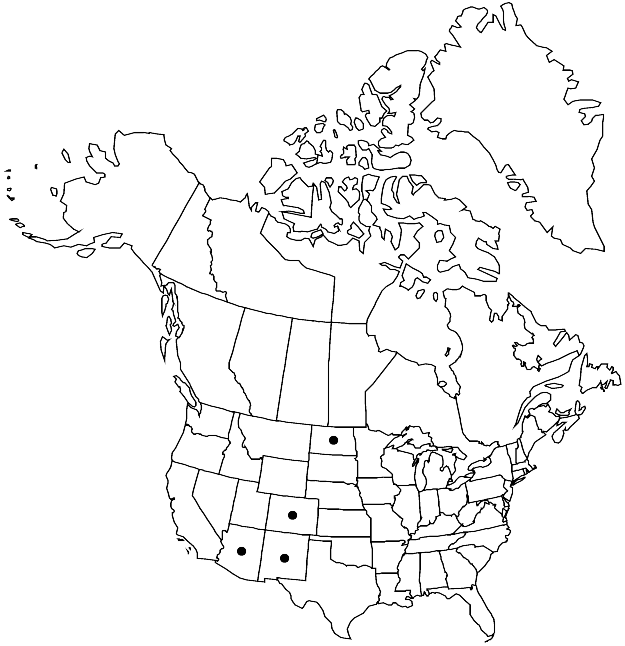Difference between revisions of "Bartramia potosica"
Ann. Sci. Nat., Bot., sér. 2, 9: 56. 1838.
FNA>Volume Importer |
FNA>Volume Importer |
(No difference)
| |
Revision as of 19:44, 24 September 2019
Plants in dense tufts, glaucous or yellowish green. Stems 0.5–4 cm. Leaves erect-appressed to laxly erect when dry, erect-spreading to spreading recurved or somewhat secund when moist, narrowly lanceolate, 3–8 mm; base sheathing, shoulders well developed, delicate, often eroded; margins plane or weakly revolute, serrulate distally, teeth paired; apex acuminate, subulate, fragile, frequently broken; costa excurrent, prominent in distal limb, distal abaxial surface rough; basal laminal cell walls thin; distal cells 10–25 × 5–6 µm, prorulae high. Sexual condition apparently dioicous. Sporophytes unknown.
Habitat: Cliff crevices, thin soil on canyon ledges, base of boulders
Elevation: high elevations (2000-3300 m)
Distribution

Ariz., Colo., N.Mex., N.Dak., Mexico, Central America, South America.
Discussion
Bartramia potosica is identified by its fragile leaf apices and delicate, often eroded, shoulders. While most fertile collections from south of the flora area are dioicous, S. Fransén (1995) has encountered several synoicous plants from Mexico and Guatemala which he recognizes as B. potosica subsp. synoica Fransén. Gametangia have yet to be found on plants from the flora area.
Selected References
None.